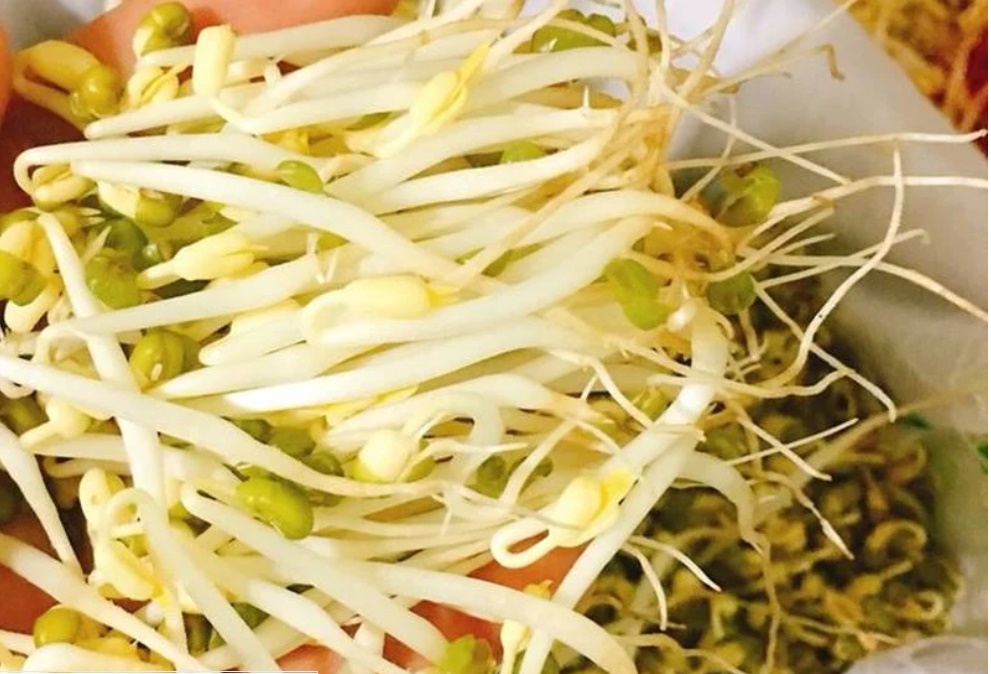1 – Things to pay attention to when buying mung beans
White sprouts, fewer roots
Naturally sprouted mung beans will have a whitish color, sometimes appearing slightly yellowish. However, mung beans treated with chemicals often contain whitening agents, which make the color of the beans appear whiter. In addition, naturally sprouted mung beans usually have a lot of roots, while mung beans treated with additives tend to develop shoots before the roots are fully formed.
If you notice that mung beans have fewer roots and excessively white sprouts, there is likely an issue with them.

Unusual smell
Naturally sprouted mung beans have a pleasant smell of fresh beans. However, mung beans treated with chemicals often have an unusual, slightly pungent smell, which can be detected even with a slight sniff.
After being cooked, clean mung beans have a sweet taste or a slightly bitter taste (when they have aged), while mung beans soaked in chemicals have a very mild taste and release more water when stir-fried.
Soft and hollow stems
Naturally sprouted mung beans have long and firm stems, which are crunchy when eaten. On the other hand, mung beans treated with additives have soft, porous stems even though they may look delicious and crunchy. Therefore, simply squeezing one stem of mung beans with your hand, if it feels soft and hollow, it is definitely not recommended to buy.
2 – Tips for choosing clean and tasty mung beans
The root part
Traditionally fermented mung beans have long roots like threads and many roots due to the extended fermentation period. Meanwhile, mung beans soaked in chemicals have short roots or even no roots at all because the soaking time usually lasts only 3 to 4 days.
The leaf part
Safe mung beans usually have open leaves or when observed from the outside, the sprouts have yellow or greenish buds. On the other hand, mung beans soaked in chemicals have two tightly closed sprouts.
Color
Safe mung beans will usually have a light white or milky color. Meanwhile, mung beans soaked in stimulants will have an attractive and beautiful milky white color.
The tip of the mung bean sprout
Generally, good mung beans have shiny, spotless seed tips. On the other hand, inferior mung beans will have black spots on the seed tips.
The stem part of the mung bean
Chemical-free mung beans will have thin, slender stems that may not look particularly attractive but are not easily broken. On the other hand, mung beans soaked in stimulants have plump, thick stems that look very appealing but are brittle and easily broken.
With these tips, hopefully, you will be able to choose clean and high-quality mung beans.
Source: Khoevadep


































